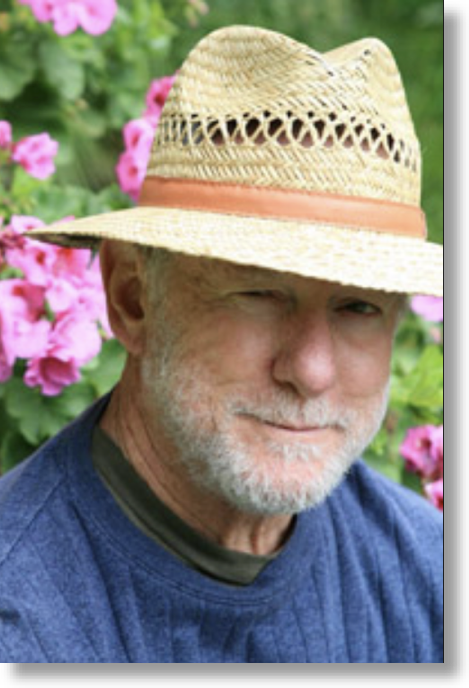A memorial to David D. Jackson, who leaves behind an influential body of work and an outstanding cohort of former students and collaborators across the globe.
By Ross S. Stein, Temblor, Inc.

If there is a clarion call of David Jackson’s that stuck in my craw for so many years, it is this: “Only prospective testing counts.” There’s tough love for you in four words.
David Jackson played a profound role in my scientific life — for the first 30 years as combatants and the past 10 years as collaborators. It’s shocking that it took me so long to see the wisdom and power of his approach, but at least in that last decade, I was able to drink from his well of insights. This culminated in our work on the Global Earthquake Activity Rate, or GEAR, model. For the past two years, we at Temblor have been building an enhanced GEAR model with 50 times the data. On March 29, we presented our new model to David and Peter Bird in a marathon Zoom session. Temblor team members were thrilled to meet David, to explain each of their contributions, and to receive his feedback. David was appreciative and encouraging, perceptive and self-effacing.
The next day, he was gone. The fragility and finality of life were never so stark. One day later and he would have missed our meeting, one decade later and I would have missed our collaboration. There is a message here: Don’t wait.
Our relationship began in 1980. Four years earlier, Bob Castle discovered the “Palmdale Bulge,” an ominous 30-centimeter (12-inch) uplift of land athwart the southern San Andreas Fault. The finding led to the 1977 Earthquake Hazards Reduction Act that dramatically increased funding for earthquake research. As a graduate student, I was studying postseismic deformation of the 1952 magnitude-7.3 Kern County earthquake along the northwest flank of the Bulge, and so began to work closely with Castle and Wayne Thatcher at the U.S. Geological Survey. In 1980, David Jackson published a paper arguing that the Bulge was a measurement mirage, but he did so with humility and gentility, titling the paper, “Aseismic uplift in southern California: An alternative interpretation.”
I was asked to debate David at two conferences, where I staked my claim that the uplift exceeded the survey errors, and David and I went on to publish dueling papers in 1981. After a dozen or so more papers and experiments in the next four years by David, by National Geodetic Survey geodesists, by Bob Castle and his collaborators, and myself, the Bulge was whittled down by error corrections to about 15 centimeters (6 inches) in my view. All through this period, Bob was defending the Bulge while writing a USGS Professional Paper that should have laid out the full, indisputable case. When I read Bob’s submitted manuscript, I was aghast. The evidence he presented was unconvincing: David had been right, the Bulge was gone. I immediately switched sides, as did Wayne.
By this time, I should have been David’s convert. But I wasn’t. Despite David being collegial in all our interactions, his prescience about the Bulge stung my pride. And it seemed over the next 20 years that any conference I attended, any field trip I took, no matter how far from California, David was there, upholding his scientific view. He argued that the only protection against selection bias and confirmation bias, which can subvert everything we do, is prospective testing. He was wary of a consensus that can sometimes substitute conviction for evidence. He was skeptical about characteristic earthquakes (he was right), time-predictable and slip-predictable earthquakes (he was right), the seismic gap hypothesis (he was right), the California earthquake drought (I believe he was right), and about Coulomb stress transfer (he pushed us to prospectively test it — and it survived).
So, it finally dawned on me that in all our debates and disputes, David was mostly right, and I was mostly wrong, and thus I should be working with him and learning from him. But what made my U-turn possible was something essential to David’s character: He never made any of our debates or differences personal. No one was demeaned. He never acted as if he were debunking something; he was instead hypothesis testing. He took no pleasure in shooting down a paper or an idea; instead, he was always gracious, always friendly. So, while he approached popular ideas with skepticism, he approached their advocates with equanimity. He was simply holding us to his high standards. I see now that only under these conditions can the scientific method truly thrive.
This is how we came to work together. We wanted to develop a global earthquake model and knew that for it to pass muster, it would have to be independently tested. However carefully and thoughtfully constructed, David considered that a California earthquake hazard model was essentially untestable. That’s because it would take a thousand years to see the largest San Andreas earthquakes rumble through several times. But a global model covers an area a thousand times larger than California, and so, by trading time for space, it could be tested in a matter of years. And so, for GEAR, it was.
David leaves behind a huge and influential body of work, an outstanding cohort of former students, and collaborators across the globe — one of whom took much too long to see the light.
- Earthquake science illuminates landslide behavior - June 13, 2025
- Destruction and Transformation: Lessons learned from the 2015 Gorkha, Nepal, earthquake - April 25, 2025
- Knock, knock, knocking on your door – the Julian earthquake in southern California issues reminder to be prepared - April 24, 2025
